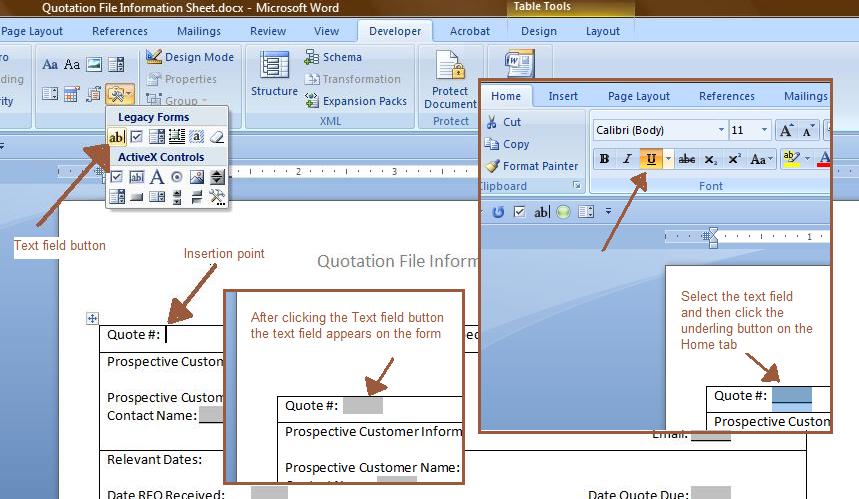

If your data substitution needs are more complex, you might consider a third-party add-on for Word, such as DataPrompter. Press F9 to collapse the REF field and replace it with the value of the form field.Type REF, a space, and then the name of the bookmark you specified in the Options dialog box for the form field.The insertion point should be within the field braces. Press Ctrl+F9 to enter a pair of field braces.With the insertion point in the header, follow these steps: If you set a name in this field, you can then use the REF field in a header to reference the value of the form field. For instance, if you take a look at the Options dialog box for a text form field, you'll notice that you can set a bookmark name for the form field. One possible workaround for this problem is to place the form fields in the main body of the document and then reference those form fields using regular fields. The problem is that Word doesn't allow form fields (or any form controls) to be placed in headers, footers, footnotes, endnotes, and a few other places. Choose a category from the categories list to simply narrow the field names. Click on the 'Quick Parts' and then click 'Field' which you can see on the 'Insert' Tab.

Some of the information that Steve needs entered must appear in the header of the document. These are the simple steps on how you can insert text field in Word 2013: Place the insertion point at the exact position where you want your field to show. These elements are available under the tab menu Developer in the Word Ribbon. You can use these elements to create a form in Word. When he creates a document based on the template, the form fields indicate what needs to be entered, thereby making it easier for users to create the documents in the format necessary. Word has this nice feature which enables insertion of text fields, check boxes, drop-down lists, etc. Steve uses form fields to allow the entry of standard information in some of his document templates.


 0 kommentar(er)
0 kommentar(er)
